Great Lakes - PGDM & PGPM Admissions 2026
Globally Recognized by AACSB (US) & AMBA (UK) | 17.8 LPA Avg. CTC for PGPM 2025
MICAT 2025 Mock Test: The MICAT exam II, which is scheduled to take place on January 25, 2025, is considered to be much more difficult than most of the other management entrance examinations. The major difference of the MICAT examination from the other exams is that it is a combination of psychometric, descriptive, and aptitude questions, as well as the difficulty of questions in each sections. To proceed to Part C of the exam, you must first complete the screening round, which consists of 150 psychometric questions and four descriptive questions. Hence you must ensure to begin your preparations early. Mock tests are essential because they help you get comfortable with the exam structure thereby enhance your time management skills, and confidence. In this Careers360 article, we'll go over all you need to know about MICAT mock exams, including why they're important and how to use them effectively during your preparation.
This Story also Contains

It is usual for candidates to ignore the importance of sample examinations after completing the MICAT syllabus. This is not suitable practice because MICAT mock examinations are vital in shaping applicants' MICAT exam preparation There are numerous free MICAT mock tests available on the internet, and applicants should ensure that they practice as many MICAT mock tests as possible. Engaging in multiple MICAT mock test series is critical for MICAT exam success. The several benefits of the MICAT mock exams are as follows:
MICAT Exam Sections | Number of Questions |
SECTION A (Psychometric Test) | 150 |
SECTION B (Descriptive Test) | 4 |
SECTION C (Divergent & Convergent Thinking+General Awareness+Quantitative Aptitude & Data Interpretation +Verbal Ability & Reading Comprehension) | 70 |
It is observed to be a common practice of the candidates to overlook the importance of the mock tests after finishing the MICAT syllabus. This is not the right practice because MICAT mock tests play a very essential role in shaping the MICAT exam preparation of the candidates. There are various free MICAT mock tests available throughout the internet and the candidates must see to it that they are practising as much as MICAT mock tests as possible. Engaging oneself in various MICAT mock test series is essential for securing MICAT exam success. The various advantages of the MICAT mock tests are as follows:
Benefit | Description |
Time Management | MICAT Mock tests help candidates manage their time better by practising how to allocate time to each section or question, making them faster in exams. |
Identifying Strengths and Weaknesses | By taking free MICAT mock tests, candidates can easily find out which topics they are strong in and which areas need more attention. |
Improving Accuracy | Regular practice with MICAT mock tests helps improve accuracy by reducing errors and enhancing focus during the actual exam. |
Building Confidence | Free MICAT Mock tests give candidates a real exam experience, boosting their confidence and reducing exam-day stress. |
Reducing Exam Anxiety | Practising with the MICAT mock test series helps candidates become more familiar with the exam pattern, lowering anxiety and nervousness on the actual MICAT exam day. |
Tracking Progress | By taking regular MICAT mock tests, candidates can track their improvement over time, allowing them to adjust their study plans as needed. |
Familiarizing with Exam Format | MICAT Mock tests help candidates get used to the format of the exam, making them feel more comfortable with the types of questions and instructions. |
Considering the value of the MICAT mock exams is minimal. Candidates should also be aware of the various ways to effectively using MICAT mock examinations to improve their MICAT exam preparation. Let's go over some tips for using these MICAT practice exams effectively.
Before preparing for their first MICAT mock exam, applicants must clearly understand why they want to take the test. As previously said, MICAT mock examinations have various advantages, including improving applicants' time management skills, evaluating candidates' strengths and weaknesses, and getting comfortable with the exam style, among other things. The candidate should explain why they're taking the MICAT mock exam.
After completing a MICAT mock test, a candidate should be prepared to review their performance and make any required changes to their MICAT exam preparation. The major goal of creating multiple MICAT mock test series is to assist applicants in understanding their preparation level, analyze their performance on the exam, and discover areas where there is potential for growth. Therefore, self-analysis of the MICAT exam sample tests is extremely significant.
The overall time allotted for the MICAT exam is 135 minutes or 2 hours 15 minutes. The candidates are expected to complete the MICAT exam within this specified time limit. Time management is one of the major villains in various management entrance exams such as MICAT. So, directly attempting the test without taking part in any MICAT mock tests may be disastrous for some candidates. Hence, the candidates should make use of these free MICAT mock test series to improve their MICAT exam preparation.
Last but not least, taking MICAT mock tests under exam-like conditions is absolutely crucial. This means that the candidates must be seated in a peaceful environment without a lot of noise and other distractions. They should also use a timer and set it to 135 minutes and stop writing as soon as the time is over. Practising this over time would help the candidates to improve their time management skills and will also help them to be exam-ready.
The candidates should try to attempt the MICAT mock tests during two different phases of their MICAT exam preparation.
Taking part in MICAT mock tests every week is highly recommended for MICAT aspirants. During the weekends, they are suggested to attempt 1 or 2 MICAT mock tests based on their preparation level and assess themselves.
The number of MICAT mock tests attempted by the candidates towards the end of their MICAT preparation is what counts for their MICAT exam success. The frequency of the mock tests should increase by then and the candidates must ensure that they give at least 3-4 mock tests weekly. They should also start giving full-length MICAT mock tests during this phase.
To assist applicants in their preparation, Careers360 has developed a specific MICAT mock test. This examination was created to closely match the actual MICAT exam, providing an actual preparation experience. One of the primary advantages of our mock test is that it was carefully created after examining the original sample papers issued by the exam authorities. The questions are specifically matched to the difficulty level of the MICAT exam, making it a great preparation tool. The Careers360 MICAT mock test is available at the link provided below.
TITLE | DOWNLOAD NOW |
MICAT Mock Test |
Here are some of the sample questions from the MICAT mock test designed by Careers360.
1. Personal development should take precedence over meeting team objectives.
A. Totally Disagree
B. Strongly Disagree
C. Disagree
D. Somewhat Disagree
E. Somewhat Agree
F. Agree
G. Strongly Agree
H. Totally Agree
2. A leader's primary role is to enforce rules rather than inspire others.
A. Totally Disagree
B. Strongly Disagree
C. Disagree
D. Somewhat Disagree
E. Somewhat Agree
F. Agree
G. Strongly Agree
H. Totally Agree
3. Compromise is essential for maintaining harmony within a team.
A. Totally Disagree
B. Strongly Disagree
C. Disagree
D. Somewhat Disagree
E. Somewhat Agree
F. Agree
G. Strongly Agree
H. Totally Agree
2a) 'Social Media has done more harm than good to society.' Present five arguments in support of this statement.
(Provide about 250 words space to write)
2b) 'Social Media has done more harm than good to society.' Present five arguments against this statement.
(Provide about 250 words space to write)
2c) Having given your arguments on both sides of the statement, 'Social Media has done more harm than good to society,' present your own views in about 200 words in response to a request from a leading technology journal editor. Please note that you have to take one viewpoint for your response, i.e., either for or against. No marks will be given for expressing your views on both sides of the argument.
2a) Arguments supporting the statement 'Social Media has done more harm than good to society':
Mental Health Issues: Social media usage has been linked to increased anxiety, depression, and lower self-esteem among users, exacerbated by constant social comparisons and perceived inadequacies. This can lead to serious long-term mental health problems, especially in young people.
Spread of Misinformation: Social media platforms often enable the rapid dissemination of false information, which can influence public opinion and lead to misinformed decisions on crucial issues. The speed and reach of this spread make it difficult to contain, even with fact-checking measures in place.
Privacy Concerns: Users' personal data are often exploited for advertising purposes without explicit consent, leading to privacy violations. Data breaches and the unauthorized sharing of information can have lasting repercussions on personal and professional lives.
Addiction and Productivity Loss: Social media is designed to be addictive, using algorithms that hook users to spend more time online, which detracts from productivity and real-world interactions. This addiction can result in significant time wasted, which could otherwise be spent on more fulfilling or productive activities.
Cyberbullying and Online Harassment: The anonymity and reach of social media facilitate cyberbullying and online harassment, which can lead to severe emotional distress for victims. This form of bullying can be relentless and more damaging than face-to-face interactions.
Echo Chambers and Polarization: Social media algorithms often create echo chambers by showing users content that aligns with their existing beliefs, which can polarize public opinion and exacerbate divisions within society. This can hinder constructive discourse and promote extremism.
2b) Arguments against the statement 'Social Media has done more harm than good to society':
Global Connectivity: Social media connects people across the world, allowing for the maintenance of long-distance relationships and the formation of global networks. It provides a platform for cultural exchange and understanding that was not possible at such a scale before.
Empowerment through Information: Users can access a vast amount of information and learning resources via social media, which can empower individuals and democratize information. This accessibility can lead to greater awareness and education on a global scale.
Support and Solidarity: Social media enables individuals to find community support and solidarity, especially important for marginalized groups or those with niche interests. It provides a space for collective action and community building that can lead to real-world impact.
Economic Opportunities: It creates economic opportunities through new job markets in digital marketing, content creation, and e-commerce. Small businesses and entrepreneurs can leverage social media to reach a broad audience at minimal cost.
Promotion of Creativity: Social media is a platform for creative expression, allowing people to share their art, writing, and ideas with a wide audience. This exposure can lead to opportunities and collaborations that might not otherwise occur.
Crisis Response and Mobilization: During crises, social media can be a critical tool for mobilization, fundraising, and disseminating emergency information swiftly. It has played a crucial role in coordinating responses to disasters and organizing aid.
Health and Wellness Awareness: Social media campaigns can effectively raise awareness about health and wellness, promoting healthier lifestyles and disseminating public health information. These campaigns can reach a vast audience quickly and can be tailored to specific demographics.
2c) Own viewpoint:
In assessing whether social media has done more harm than good, it's essential to consider both the negative impacts and the transformative positives it brings to society. While issues like mental health deterioration, misinformation, and privacy breaches are significant, they are addressable through robust regulation and better platform governance.
The benefits of social media, such as global connectivity, information access, and community support, are profound. These platforms have democratized information, given voice to the marginalized, and facilitated movements that have reshaped policy and society. The key is not to retract but to improve how social media is integrated into our lives.
Efforts should focus on enhancing the positives—strengthening connections, supporting creative expression, and using social media as a tool for positive social change. By implementing stringent data protections, promoting digital literacy, and ensuring platforms are held accountable, we can mitigate the harms while amplifying the benefits.
Therefore, I argue that social media, despite its challenges, offers more good than harm and remains a critical component of modern society. The focus should be on creating a safer and more equitable online environment that harnesses social media's potential for positive impact.
DIRECTIONS for the question:The passage below is accompanied by a set of questions. Choose the best answer to each question.
The biggest challenge [The Nutmeg's Curse by Chosh] throws down is to the prevailing understanding of when the climate crisis started. Most of us have accepted . . . that it started with the widespread use of coal at the beginning of the Industrial Age in the 18th century and worsened with the mass adoption of oil and natural gas in the 20th, Ghosh takes this history at least three centuries back, to the start of European colonialism in the 15th century. He [starts] the book with a 1621 massacre by Dutch invaders determined to impose a monopoly on nutmeg cultivation and trade in the Banda islands in today's Indonesia. Not only do the Dutch systematically depopulate the islands through genocide, they also try their best to bring nutmeg cultivation into plantation mode. These are the two points to which Ghosh returns through examples from around the world. One, how European colonialists decimated not only indigenous populations but also indigenous understanding of the relationship between humans and Earth. Two, how this was an invasion not only of humans but of the Earth itself, and how this continues to the present day by looking at nature as a 'resource' to exploit. . .
We know we are facing more frequent and more severe heatwaves, storms, floods, droughts and wildfires due to climate change. We know our expansion through deforestation, dam building, canal cutting - in short, terraforming, the word Ghosh uses - has brought us repeated disasters... Are these the responses of an angry Gaia who has finally had enough? By using the word 'curse' in the title, the author makes it clear that he thinks so. use the pronoun 'who' knowingly, because Chosh has quoted many non-European sources to enquire into the relationship between humans and the world around them so that he can question the prevalent way of looking at Earth as an inert object to be exploited to the maximum.
As Ghosh"s text, notes and bibliography show once more, none of this is new. There have always been challenges to the way European colonialists looked at other civilisations and at Earth. It is just that the invaders and their myriad backers in the fields of economics, politics, anthropology, philosophy, literature, technology, physics, chemistry, biology have dominated global intellectual discourse....
There are other points of view that we can hear today if we listen hard enough. Those observing global climate negotiations know about the Latin American way of looking at Earth as Pachamama (Earth Mother). They also know how such a framing is just provided lip service and is ignored in the substantive portions of the negotiations. In The Nutmeg's Curse, Ghosh explains why. He shows the extent of the vested interest in the oil economy - not only for oil-exporting countries, but also for a superpower like the US that controls oil drilling, oil prices and oil movement around the world. Many of us know power utilities are sabotaging decentralised solar power generation today because it hits their revenues and control. And how the other points of view are so often drowned out.
1. All of the following can be inferred from the reviewer's discussion of "The Nutmeg"s Curse", EXCEPT:
2. Which one of the following best explains the primary purpose of the discussion of the colonisation of the Banda Islands In "The Nutmeg's Curse"?
3. Which one of the following, if true, would make the reviewer's choice of the pronoun "who" for Gala Inappropriate?
Ranked among top 10 B-Schools in India by multiple publications | Top Recruiters-Google, MicKinsey, Amazon, BCG & many more.
400+ Recruiters | Highest CTC 21 LPA | Average CTC 8 LPA | 92% Placements in 2025 | Ranked as Platinum Institute | Awarded Best Business School of the Year
4. The four sentences (labelled 1, 2, 3, 4) below, when properly sequenced would yield a coherent paragraph. Decide on the proper sequencing of the order of the sentences and key in the sequence of the four numbers as your
1. Relying on narrative structure alone, indigenous significances of nineteenth century San folktales are hard to determine.
2. Using their supernatural potency, benign shamans transcend the levels of the San cosmos in order to deal with social conflict and to protect material resources and enjoy a measure of respect that sets them apart from ordinary people.
3. Selected tales reveal that they deal with a form of spiritual conflict that has social implications and concern conflict between people and living or dead malevolent shamans.
4. Meaning can be elicited, and the tales contextualized, by probing beneath the narrative of verbatim, original-language records and exploring the connotations of highly significant words and phrases.
5. Direction : Analyse the graph/s given below and answer the question that follows.
Study the following bar graph giving Economic Indices for the period 1961-62 to 2001-02 to answer the question.
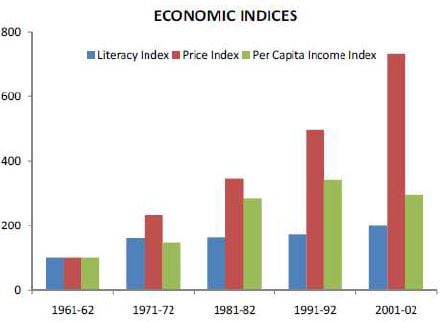
What are the respective indices of literacy, price and per capita income for 2001-02 taking 1971-72 as the base period?
6. In which period the per capita income index increases at a faster rate than the price index as compared to the preceding
period?
7. Of the three economic indices, which index for which period shows the maximum percentage increase as compared to the
previous period?
8. Match the CEOs to their respective companies: A. Rick Tsai
B. Elon Musk
C. Michael Meibach
D. Kasper Rørsted
A. A-2, B-1, C-4, D-3
B. A-1, B-2, C-3, D-4
C. A-4, B-3, C-1, D-2
D. A-3, B-4, C-2, D-1
9. Match the CEOs to their respective companies: A. John Donahoe
B. Noel Quinn
C. Bob Chapek
D. Fujio Mitarai
A. A-1, B-2, C-3, D-4
B. A-2, B-1, C-4, D-3
C. A-3, B-4, C-2, D-1
D. A-4, B-3, C-1, D-2
9. Match the companies to their respective headquarters: A. PepsiCo
B. Nestle
C. Home Depot
D. Berkshire Hathaway
A. A-2, B-3, C-4, D-1
B. A-4, B-2, C-1, D-3
C. A-1, B-4, C-3, D-2
D. A-3, B-1, C-2, D-4
10. Select the incorrect option:
A. Toshiba Corporation was incorporated in 1939 as Tokyo Shibaura Electric Company, Ltd., resulting from the merger of Shibaura Engineering Works, Ltd., and Tokyo Electric Company, Ltd.
B. The original Shibaura company, founded in 1875, focused on manufacturing engines for ocean vessels and was later taken over by the Mitsui business combine.
C. Tokyo Electric Light Company, founded in 1890, was known for its manufacturing of bamboo-filament electric lightbulbs, and was financed by the Mitsui group.
D. Toshiba Corporation adopted its present name in 1978 after separating from the Mitsui group, with whom it was reaffiliated in 1973.
11. There are six problems in this section. Each problem consists of four clues, and for each set, five alternatives are given. These alternatives are associated with one or more of the clues in some manner. Of these alternatives, only one is associated with all four clues in some way. This alternative is the correct answer.
Clues:
Alternatives: A. Winter
B. Ice
C. Desert
D. Ocean
E. Summer
12. There are six problems in this section. Each problem consists of four clues, and for each set, five alternatives are given. These alternatives are associated with one or more of the clues in some manner. Of these alternatives, only one is associated with all four clues in some way. This alternative is the correct answer.
Clues:
Desert
Sand
Heat
Camel
Alternatives:
A. Snow
B. Rain
C. Forest
D. Oasis
E. Jungle
13. Directions: A situation is given, followed by two conclusions I and II. Read the situation and both the conclusions carefully and select the correct answer.
Situation:
Since the past 15 years, 75% of the products in the world’s pottery market come from Country K. However, the employment in the pottery industry of Country K has been consistently declining by 5 - 9% every year since the past 3 years.
Conclusions:
I. Even after declining employment, Country K has enough potters to continue contributing equally to the international market.
II. The local demand for pottery in Country K has substantially decreased leading to less interest among potters.
14. Directions: Select the set in which the numbers are related in the same way as the numbers of the following sets.
(NOTE: Operations should be performed on the whole numbers, without breaking down the numbers into their constituent digits. E.g. 13 – operations on 13 such as adding/subtracting/multiplying, etc., to 13 can be performed. Breaking down 13 into 1 and 3 and then performing mathematical operations on 1 and 3 is NOT allowed.)
(11, 33, 17)
(18, 44, 21)
15. Directions: In the following question select the missing figure from the given responses.

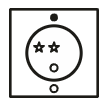
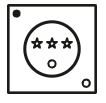
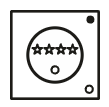
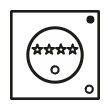
===============================================================================================================================
1 -D, 2 -C, 3 -D, 4 -B, 5 -A, 6 -C, 7 -D, 8 -B, 9 -A, 10 -D, 11 -E, 12 -D, 13 -C, 14 -C, 15 -C
===============================================================================================================================
1. Solution: Option D
Explanation: The passage suggests that academic discourses often supported colonial viewpoints rather than consistently raising awareness about environmental preservation.
Option 1 is incorrect as the passage implies a link between colonialism and climate change.
Option 2 is incorrect because the passage suggests contemporary views of nature stem from colonialist processes.
Option 3 is incorrect because the passage indicates that non-European and pre-colonial societies offer valuable insights for environmental policy.
2. Solution: Option C
Explanation: The passage uses the Dutch colonization of the Banda Islands as an example of how European colonialism's exploitation of Earth contributed to the current climate crisis.
Option 1 is incorrect because systemic violence is not the main focus in the context of climate change.
Option 2 is incorrect as the passage does not suggest this was the first instance of climate change.
Option 4 is incorrect because the passage does not primarily focus on crop cultivation's role in climate change.
3. Solution: Option D
Explanation: Using the pronoun "who" for Gaia reflects viewing Earth as a living entity, consistent with Ghosh's perspective. If non-European societies saw Earth solely as a non-living resource, this would contradict the use of a personifying pronoun.
Option 1 is incorrect because establishing a cause-effect relationship between human activities and climate change supports, rather than contradicts, personifying the Earth.
Option 2 is incorrect as Ghosh's book title is not relevant to the pronoun's appropriateness.
Option 3 is incorrect because new evidence about Earth being inanimate from Western science does not relate to the pronoun issue in the context of Ghosh's focus.
4. Solution: Option B
The passage begins by addressing a critical issue, delineated in Statement (1): the challenges associated with comprehending the native significance of nineteenth-century San folktales through the lens of mere narrative structure. The author suggests that this approach is insufficient, emphasizing that one must consider other variables to grasp the true essence of these tales.
Statement (4) elaborates on this point by asserting that an examination should extend beyond the surface-level narrative to achieve a holistic understanding. This is crucial because it provides a methodology for interpreting the tales in a way that resonates more deeply with their cultural origins.
Subsequently, Statements (3) and (2) offer specific examples that demonstrate the outcomes of applying such an enriched analytical approach. Statement (3) shines a light on shamans characterized as malevolent and deceased, presenting one facet of the depth uncovered when we dig deeper into the folklore. Following this, Statement (2) completes the picture by discussing benign shamans, indicating that the complex nature of these characters can only be appreciated through a more nuanced examination.
Therefore, the most coherent sequence for forming a complete and insightful paragraph would be to follow the order of Statements (1)-(4)-(3)-(2). This sequence allows for an introduction to the problem, the methodology for a more in-depth examination, and then concrete examples that result from such an approach.
5. Solution: Option A
Correct Answer:- A
Explanation:-
Literacy index for the 2001-02 with 1971-72 as the base period = 200 / 161.1 × 100 = 124.1
Price index for the year 2001-02 with 1971-72 as the base period = 732 / 233.3 × 100 = 313.8
Per capita income index for the year 2001-02 with 1971-72 as the base period = 296 / 148.2 × 100 = 200
Hence answer is 1st option
6. Correct Answer:- C
Explanation:-
| Year | Per capita income index | Price index |
| 71-72 | 48.20% | 133.30% |
| 01-02 | There is a decrease, so no need to check | |
| 81-82 | (284.8-148.2)/(148.2) =92.2% | (344.9-233.3)/(233.3) =47.8% |
| 91-92 | (341.4-284.8)/(284.8) =19.8% | (496.2-344.9)/(344.9) =43.8% |
So the increase is fastest in 1981-82 over the previous year.
7. Correct Answer:- D
Explanation:-
From the bar graph we can say that the price index in 1971- 72 has been increased by more than 100% from the previous period.
8. Correct Option: B
Explanation:
Rick Tsai is the CEO of MediaTek, so A matches with 1.
Elon Musk is the CEO of Twitter, so B matches with 2.
Michael Meibach is the CEO of MasterCard, so C matches with 3.
Kasper Rørsted is the CEO of Adidas, so D matches with 4.
Therefore, the correct matching is A-1, B-2, C-3, D-4, which corresponds to option B.
9. Correct Option: A
Explanation:
Thus, the correct matching is A-2, B-3, C-4, D-1, which corresponds to option A.
10. Correct option: D
Explanation: The statement is incorrect because Toshiba Corporation adopted its present name in 1978, but it did not separate from the Mitsui group at that time. Instead, Toshiba was reaffiliated with the Mitsui group in 1973, and the separation from Mitsui actually occurred with the dissolution of the zaibatsu after World War II.
11. The correct answer for the new set of clues is E. Summer.
Explanation:
Thus, E. Summer is the correct answer as it relates to all four clues.
12. Correct Option: D. Oasis
Explanation: An oasis is the only alternative associated with all four clues: Desert, Sand, Heat, and Camel. An oasis is found in the desert, surrounded by sand, provides relief from the heat, and is a place where camels are often found.
13. Correct Option: C
Given:
Situation:
Since the past 15 years, 75% of the products in the world’s pottery market come from Country K. However, the employment in the pottery industry of Country K has been consistently declining by 5-9% every year since the past 3 years.
Let's analyse the conclusions –
Conclusion (I): Even after declining employment, Country K has enough potters to continue contributing equally to the international market – It is evident from the statement that for the past 15 years, 75% of the products in the world's pottery market have been coming from Country K. Even though there has been a consistent decline in employment in the pottery industry of Country K for the past 3 years, their contribution to the market remains unchanged.
Conclusion (II): The local demand for pottery in Country K has substantially decreased leading to less interest among potters – In the given statement, there is no mention of a decrease in local demand resulting in less interest from potters.
So, only the first conclusion can be concluded. Hence, the third option is correct.
14. Correct Option: C
Given:
(11, 33, 17); (18, 44, 21)
Add 5 to the sum of the first and the third numbers to get the second number.
⇒ (11, 33, 17)→(11 + 17) + 5 = 33
⇒ (18, 44, 21)→(18 + 21) + 5 = 44
Let's check each option –
First option: (12, 40, 18)→(12 + 18) + 5 = 35 ≠ 40
Second option: (7, 32, 9)→(7 + 9) + 5 = 21 ≠ 32
Third option: (16, 43, 22)→(16 + 22) + 5 = 43
Fourth option: (15, 34, 19)→(15 + 19) + 5 = 39 ≠ 34
So, only the third option follows the same pattern as followed by the given set of numbers. Hence, the third option is correct.
15.Correct Option: C
According to the given figures –
1. In each figure the number of stars is increased by one.
2. The dot outside the circle does not change its position but the circle given outside the big circle changes position from bottom left to bottom right and bottom right to bottom left.
So, following the above pattern, the required figure will be as follows –
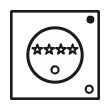
Therefore, the figure in the third option is the required missing figure. Hence, the third option is correct.
The MICAT preparation of the candidates must be in its entirety during the final month of the MICAT preparation. Now let us understand how to make the most of the MICAT mock test series during the final month of the MICAT exam preparation.
Taking full-length MICAT mock tests regularly is essential in the final month as it helps candidates develop the endurance required for the actual MICAT exam. By simulating the real exam experience, candidates can get used to the pressure of sitting through the entire duration, making it easier to stay focused on the test day.
Identifying Patterns
MICAT Mock test results provide valuable insights into a candidate's strengths and weaknesses. By analyzing these results, candidates can identify recurring mistakes or weak sections where they need to improve. Recognizing these patterns allows candidates to adjust their preparation, putting more effort into specific topics or types of questions that pose a challenge.
MICAT requires efficient time management to ensure every section is attempted within the given time limit. By testing different time management strategies in mock exams, candidates can figure out the most effective approach for them. Whether it's allocating specific time slots for each section or balancing speed with accuracy, fine-tuning time management through mocks can boost overall performance.
Book Title | Authors |
How to Prepare for Quantitative Aptitude for the CAT | Arun Sharma |
Quantitative Aptitude for CAT | Nishit Sinha |
Quantitative Aptitude Quantum CAT | Sarvesh Verma |
How to Prepare for Verbal Ability and Reading Comprehension for CAT | Meenakshi Upadhyay, Arun Sharma |
Logical Reasoning and Data Interpretation for the CAT | Nishit K. Sinha |
A Modern Approach to Logical Reasoning | R.S. Aggarwal |
Word Power Made Easy | Norman Lewis |
High School English Grammar & Composition | Wren & Martin |
Quantitative Aptitude for Competitive Examinations | Abhijit Guha |
Data Interpretation & Data Sufficiency | Ananta Ashish |
CAT Data Interpretation & Logical Reasoning | Gautam Puri |
PSC for VA for CAT | Nishit Sinha |
30 Days to a More Powerful Vocabulary | Dr. Wilfred Funk, Norman Lewis |
The Pearson Guide to Verbal Ability and Reading Comprehension for CAT | Nishit Sinha |
Manorama Year Book | Malayala Manorama Group |
Objective General Knowledge (Lucent's) | Sanjiv Kumar |
Lucent's General Knowledge | Lucent |
General Knowledge 2025 | Manohar Pandey |
Lucent's General Knowledge 2025 | Dr. Binay Karna |
Arihant’s General Knowledge 2024 | Manohar Pandey |
eBook Title | Download Links |
3000+ Most Important Words - Vocabulary Builder | |
500+ Most Important Idioms and Phrases | |
300+ Most Important Phrasal Verbs | |
Permutation & Combination - Video Lectures and Practice Questions | |
Mastering DILR Questions with Expert Solutions |
Frequently Asked Questions (FAQs)
MICAT is often considered tougher than CAT for some candidates because it includes sections on creativity, general awareness, and psychometric evaluation, which are not part of the CAT. The diverse nature of MICAT can make it more challenging compared to the more straightforward, quantitative focus of the CAT.
Each year, around 4,000 to 5,000 students typically take the MICAT exam. The exact number can vary slightly depending on the year.
MICA is especially famous for its Postgraduate Program in Strategic Marketing and Communication. This program is well-regarded for its focus on marketing strategies, communication skills, and media management and is regarded as one of the finest in the country.
As per experts, a good MICAT score can be considered between 45 to 50, with a minimum score of 4 in Personal Interview and 3.5 in General Exercise, both of these rounds are for 5 marks each.
MICAT is an entrance exam for MICA that assesses psychometric tests, descriptive writing, and aptitude skills.
MICAT will take place on December 7, 2024, and January 25, 2025.
MICAT is unique in that it includes psychometric tests, descriptive questions, aptitude-based portions, and an unknown scoring technique.
Psychometric assessments evaluate your personality and fit for MICA's creative and leadership positions. These questions have neither right nor wrong solutions.
Mock exams help you improve your time management, evaluate your skills and shortcomings, gain confidence, and become familiar with the exam structure.
The MICAT exam consists of 224 questions divided into three portions.
On Question asked by student community
MICA (Mudra Institute of Communications, Ahmedabad) is a top marketing institute, but public data about it and MICAT is limited. MICA shares mainly important information like admission rules, application process, and exam schedules. Detailed past exam data or cut-offs are not usually published to protect privacy and maintain exam integrity.
For accurate information, visit the official MICA website or contact their admissions office. Alumni can also give useful insights.
https://www.mica.ac.in/
Admission to MICA's PGDM and PGDM-C programs involves a multi-stage selection process. The final composite score is calculated with the following weightage:
Your XAT score is 73, performing exceptionally well in MICAT can enhance your chances of being shortlisted for the GE and PI rounds. Specific score requirements for MICAT are not publicly disclosed, focusing on thorough preparation and aiming for high performance in each section will strengthen your application.
Hi,
If you are downloading this eBook/ Sample paper on your mobile, follow these steps:
Once the download is complete, you can find the eBook in your Downloads folder. Tap to open it, and your device will prompt you to select a PDF viewer or other compatible apps to access the file.
After downloading via Safari, tap the downward arrow icon located next to the URL bar. Once the file appears, save it to your Files app for easy access.
If you are downloading this on your app, then follow these steps after downloading the ebook/sample paper-
- Go to the
"eLibrary"
section of the app you will see
"All Books"
tab is open by default.
- In right of the "All Books" tab, you will see "My Reads" tab, navigate to "My Reads" and you will see your downloaded material there.
- Click "Read Now" to read any material or pdf.
Hello,
GMAT is graduate management admission test which is conducted by GMAC for admission of MBA in many countries, the eligibility criteria regarding this is as follows;
Candidates needs to be 18 years old or above,
Pass bachelor's degree in any discipline from a recognized university, those in the final year or working professionals too are eligible to apply,
Should have a valid passport,
As the exam is conducted in English, hence proficiency in the same language is required as well,
Candidate can take maximum of five attempts in a year, and overall 8 attempts for lifetime, and there has to be a gap of 16 days prior to retaking the exam,
Colleges in India accepting GMAT scores are as follows;
explore more detailed information about GMAT at https://www.careers360.com/exams/gmat
check out the entire list of colleges in India accepting GMAT at https://bschool.careers360.com/colleges/list-of-mba-colleges-in-india-accepting-gmat?icn=college_listing_accepting_score&ici=GMAT_exam_view
SNAP is conducted for 60 minutes in MCQs format, each question consists of one mark, there is deduction of 0.25 marks for each incorrect attempt, the following sections are included in the entrance test:-
The colleges accepting scores of SNAP are listed below;
check out our page at https://bschool.careers360.com/colleges/list-of-mba-colleges-in-india-accepting-snap to know more details regarding this.
CMAT is conducted for 180 minutes, and additional 30 minutes is allotted for optional section, there are total of five sections(one is optional) and each one consists of 25 questions for 100 marks as mentioned below-
for each correct answer four marks are awarded and in case of each incorrect attempt one mark is deduced,
The selection process mainly consists of three rounds:-
Written Ability Test,
Group Discussion, and
Personal Interview
Some of the top colleges offering admission for MBA Programme through CMAT are mentioned below-
Explore more detailed information about the complete list of colleges offering MBA through CMAT at https://bschool.careers360.com/articles/top-b-schools-accepting-cmat-scores
The list of colleges accepting scores of NMAT are as follows;
check out our page at https://bschool.careers360.com/colleges/list-of-mba-colleges-in-india-accepting-nmat-by-gmac to know more details regarding this.
Hey!
On February 17, 2022, MICA, Ahmedabad, announced the MICAT 2022 result for phase 2 on mica.ac.in. Using their login credentials, candidates may check the MICAT 2022 phase 2 result. MICAT result 2022 has been emailed to applicants' registered email addresses, and students who took the entrance exam can now verify their qualifying status.
To check the result, follow the below mentioned steps:
Visit MICA Ahmedabad's main website at mica.ac.in.
Select "MICAT 1 Result" from the drop-down menu.
On the screen, a candidate login window will display.
Click the "Login" tab after entering the user ID and password.
Download the MICAT scorecard 2022 and check your qualifying status.
For further information, check out the link provided below.
Globally Recognized by AACSB (US) & AMBA (UK) | 17.8 LPA Avg. CTC for PGPM 2025
Ranked amongst top 3% universities globally (QS Rankings)
Highest Package 27.25 LPA | Top 100 Average package 16.65 LPA | AACSB Accredited | Ranked 52 by QS International
Phase 02 Applications Window Closing on 23rd January 2026 | 100% Placement Record | Average CTC 12.75 LPA | Highest CTC 40.31 LPA | Median CTC 12.49 LPA
Application Deadline 15th Jan’26 | UGC Approved Programs | Near 100% Placement Record | Up to 100% Scholarships | Highest CTC 21.32 LPA
Ranked #36 amongst institutions in Management by NIRF | 100% Placement